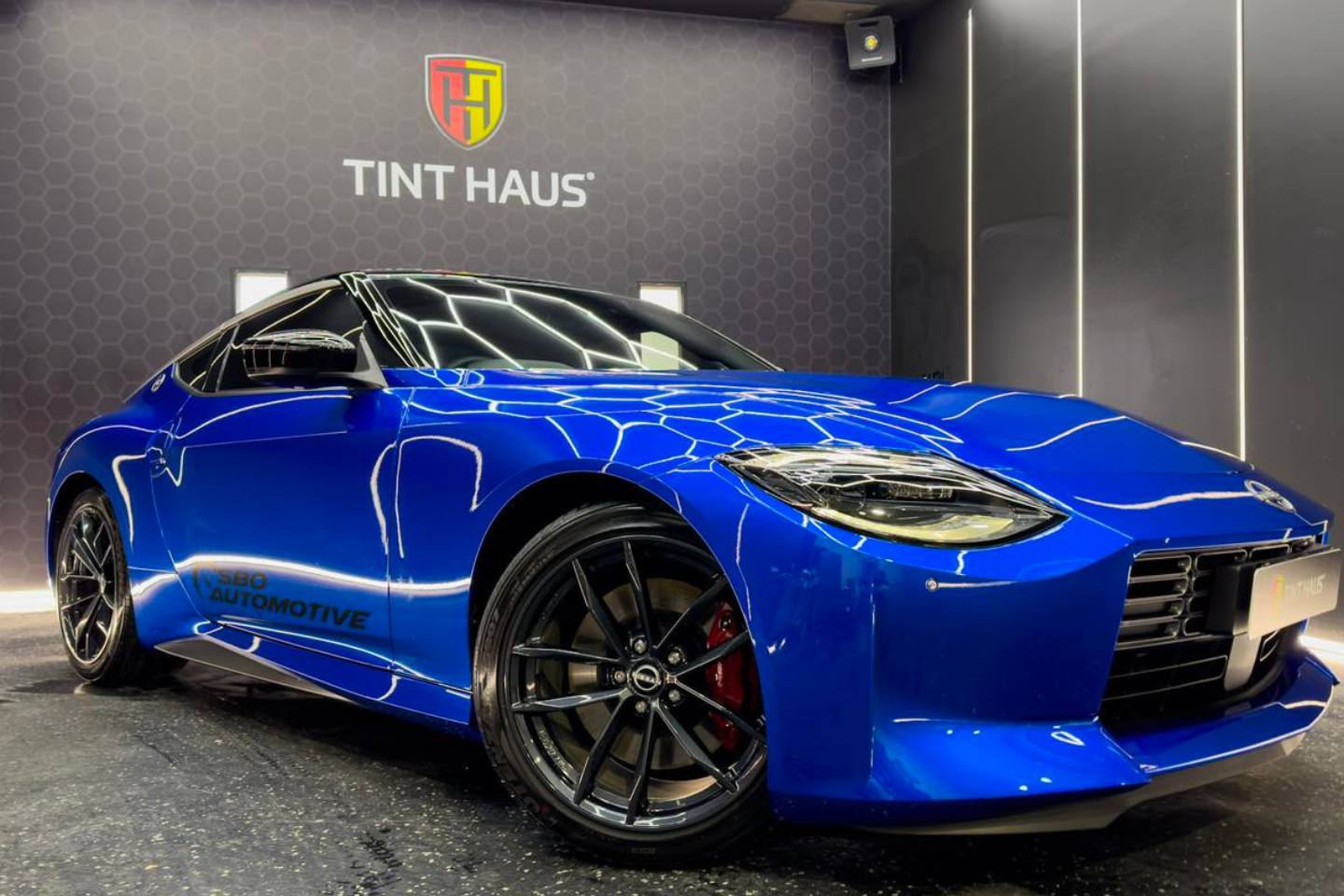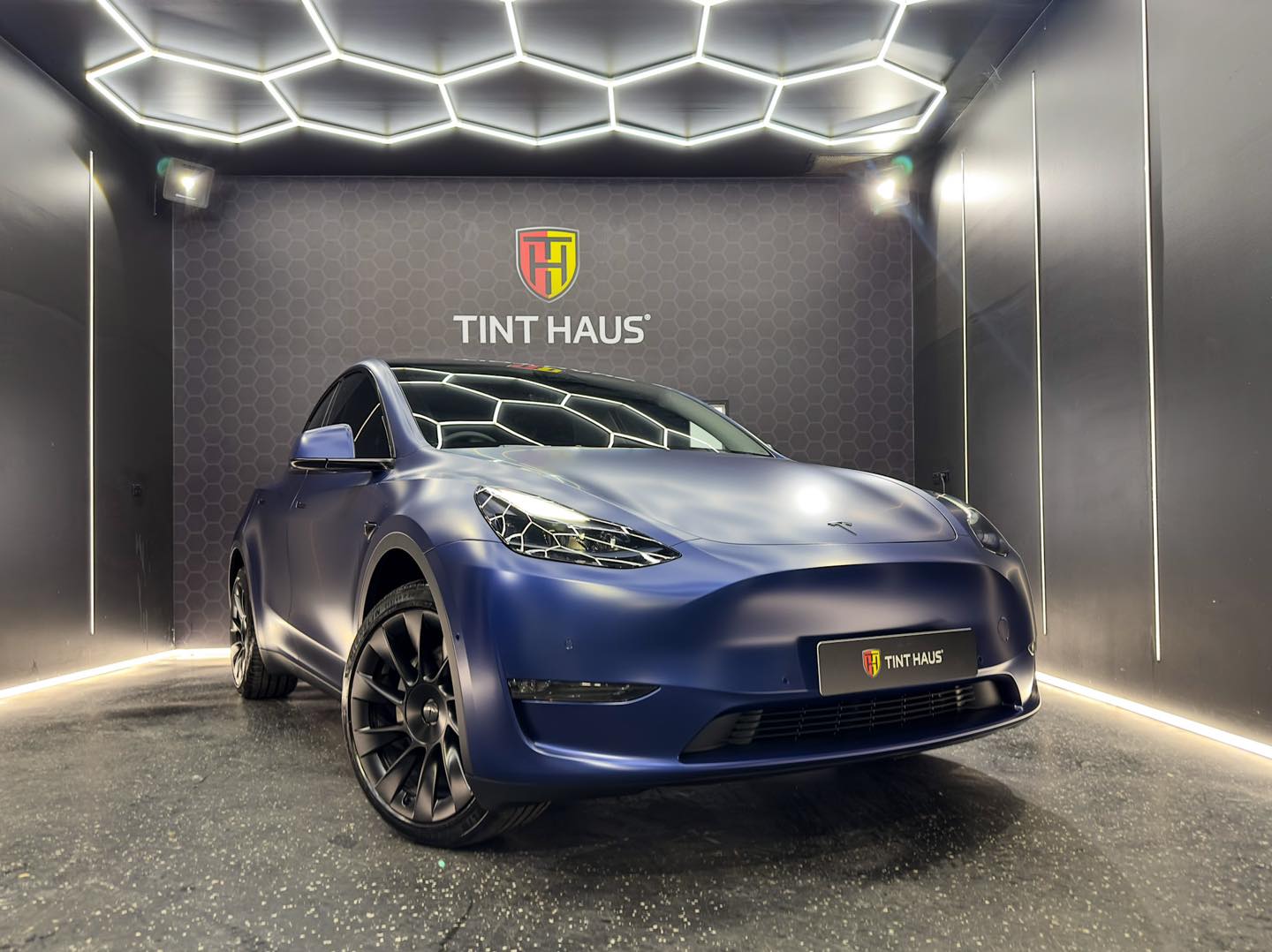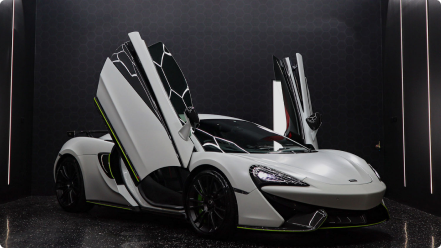7 Reasons To Tint Your Car Windows
Car Window Tinting in a Nutshell
- Car window tints reduce heat, UV, and can even improve visibility
- Professional window tint installation is recommended
- The best car window tint professionals provide a life-time-warranty
- Not all films and brands are created equal – talk to your tinting professional
Considering Vehicle Window Tinting? Your Questions Answered
Thinking about adding window tinting to your car?
Australia’s harsh sun and long hot summers make tinted windows a necessity – increasing cabin comfort and even enhanced security.
But, before you take the plunge, you might have some questions. This article will cover everything you need to know about vehicle window tinting, including its legality, the different options available, and the compelling reasons to tint your windows.
What is Car Window Tinting?
Car window tint is a thin laminate film applied to the interior surface of your car’s windows.
It comes in a variety of shades and materials, offering several functional and aesthetic benefits. Here’s a closer look at everything you need to know about getting your car’s windows tinted in Australia.
Is Vehicle Window Tinting Legal in Australia?
Yes, window tinting is legal in most parts of Australia, but there are regulations regarding the Visible Light Transmission (VLT) percentage allowed on different car windows. VLT refers to the amount of light that can pass through the tinted window. Here’s a quick breakdown of the legal limits:
- Front Driver and Passenger Side Windows: These windows must allow at least 35% of visible light to pass through (35% VLT).
- Rear Side Windows and Rear Window: These windows can have a lower VLT percentage, with a minimum requirement of 20% for most states.
Important Note: It’s crucial to check the specific regulations in your state or territory, as VLT percentages may vary slightly. You can usually find this information on your state government’s website.
In most of Australia, vehicle window tinting is indeed legal, with certain restrictions. You can only tint your windows up to a certain darkness, which is measured in Visible Light Transmission (VLT).
Your front side windows must have over 35% VLT, and the back side and rear windows must have over 20% VLT. In order to be sure that you are following the law when tinting your windows, it’s best to check the specific policies in your state.
Common Car Window Tinting Options
There are a variety of window tint films available, each with its own properties and benefits. Here’s a closer look at some of the most common types:
- Dyed Tint: This is the most affordable and widely used option. Dyed film achieves its darkness through coloured dyes, but it offers less UV protection compared to other films.
- Metalized Tint: Metalized tint incorporates a thin layer of metal, making it highly reflective and effective at reducing heat rejection. However, this metal layer can sometimes interfere with radio and GPS signals.
- Hybrid Tint: This combines the dyed and metalized technologies, offering a balance between affordability, heat rejection, and UV protection without significantly impacting signals.
- Carbon Tint: Carbon tint utilises a layer of microscopic carbon particles to block heat and UV rays. It’s known for its excellent heat rejection capabilities but can be more expensive than dyed or metalized films.
- Crystalline Tint: This high-end tint offers exceptional clarity while still blocking UV rays and rejecting solar heat. Crystalline tint allows you to maintain a nearly invisible appearance from the outside while enjoying the benefits of tinting.
- Ceramic Tint: Ceramic tint is another premium option that excels at heat rejection without compromising on clarity. It also offers superior protection against UV rays and has the added benefit of strengthening the window glass, making it more shatter-resistant.
At Tint Haus we only use the highest quality Carbon & Ceramic window tint films from XPEL.
7 Reasons Why You Should Tint Your Car Windows
Window tinting offers a compelling value proposition for Australian drivers. Here are just a few of the reasons why you might consider adding window tint to your car:
- Enhanced Comfort and Reduced Glare
- Reduced car cabin temperatures
- Protection from UV Radiation
- Increased Safety and Security
- Improved Privacy
- Enhanced Aesthetic Appeal
- Protection for Your Car’s Interior
#1 Enhanced Comfort and Reduced Glare
Tinted windows significantly reduce glare from the sun and oncoming headlights, making driving a more comfortable and safer experience. This is especially beneficial for long journeys or night driving.
#2 Reduced Car Cabin Temperature
Australia is known for its harsh sun. Window tint helps block solar heat from entering your car, lowering the interior temperature and reducing the strain on your air conditioning system. This can lead to improved fuel economy, especially during the hot summer months.
#3 Protection from UV Radiation
Excessive exposure to the sun’s UV rays can cause skin damage and increase the risk of skin cancer. Window tint blocks up to 99% of harmful UV rays, helping to protect you and your passengers from the sun’s damaging effects.
#4 Increased Safety and Security
Certain window tint films, particularly metalized, carbon, and ceramic, can strengthen the window glass, making it more shatter-resistant in case of an accident. Additionally, tinting can deter smash-and-grab thefts by making it harder for potential thieves to see valuables inside your car.
#5 Improved Privacy
Window tint provides an added layer of privacy, making it difficult for people to see into your car. This can be beneficial for keeping your belongings out of sight and for enjoying a sense of privacy while you’re on the road.
#6 Enhanced Aesthetic Appeal
Tinted windows can give your car a sleek and stylish look. The subtle darkness adds a touch of sophistication and complements the overall appearance of your vehicle.
#7 Protection for Your Car's Interior
UV rays from the sun can fade and crack your car’s upholstery and interior plastics over time. Window tint helps to block UV rays, protecting your car.
Car Window Tint Examples
DIY vs. Professional Car Window Tinting?
The idea of DIY car window tinting is attractive. It offers the satisfaction of completing a project yourself along with potentially saving money on installation.
Here’s a quick look at the pros and cons of both DIY and professional window tinting:
DIY Pros:
- Lower upfront cost: DIY kits are cheaper than professional installation. However, if you purchase the same brands used by your installer, you are unlikely to save much if any.
- Convenience: You can avoid waiting for an appointment and tint your car on your own schedule.
- Satisfaction (if successful): Completing a DIY tint job can be rewarding.
DIY Cons:
- Requires a clean environment: Dust and dirt can ruin the tint job. A home garage might not be suitable, and don’t even think about your driveway or the side of the road!
- Expertise needed: Applying tint effectively requires experience with tools and adhesives. Poor installation can lead to peeling, bubbling, or visibility issues. (The Internet and Youtube are littered with failures)
- Risk of damage: Mistakes during DIY tinting can damage your car windows.
Professional Pros:
- Flawless application: Window Tinting Professionals ensure a clean, bubble-free tint job.
- Expertise and advice: They can recommend the right tint for your car and needs.
- Time-saving: Skip the hassle of a DIY project and let the experts handle it.
- Warranty: The best installers provide a lifetime warranty on their Car Window Tints
Professional Cons:
- Higher cost: Professional installation is more expensive than DIY kits.
- Waiting time: You might need to schedule an appointment in advance.
Are There Any Drawbacks to Adding Window Tint to Your Car?
While window tinting offers a multitude of benefits, it’s important to consider some potential drawbacks before making a decision:
- Reduced Visibility at Night For Low Quality Films: Depending on the darkness of the tint you choose, there can be a slight reduction in visibility at night. This is important to consider if you frequently drive in low-light conditions. However, our tinted films actually improve night time visibility as they reduce headlight glare.
- Potential Legal Issues: Failing to comply with window tinting regulations in your state or territory can lead to fines and require you to remove the tint. Always ensure you use a reputable installer who uses films that meet legal VLT requirements.
- Film Quality Variations: There’s a significant difference in quality between various window tint films. Lower-quality films may fade, bubble, or peel over time, potentially requiring replacement. Opting for high-quality film from a reputable brand will ensure a longer lifespan and better performance.
- Professional Installation Recommended: While DIY window tint kits are available, achieving a flawless and bubble-free application can be challenging. Professional installers have the experience and tools to ensure a perfect installation for optimal performance and aesthetics.
Caring for Your Car’s Tinted Windows
Once you’ve had your windows tinted, proper care will ensure they look their best and last for years to come. Here are some tips for maintaining your window tint, answering some of the most common questions:
(First, remember that your window tint has been placed on the inside of the glass.)
What is the best way to clean tinted car windows?
- Avoid harsh chemicals and abrasive cleaners. These can damage the tint film over time. The best way to clean your tinted windows is to use a mild soap and water solution. You can also use a microfiber cloth specifically designed for cleaning cars to avoid scratches.
How do you protect tinted car windows?
- Park in shaded areas whenever possible:
This may sound ridiculous – as part of the reason for adding tint is to cool the car’s interior. However, it is a fact that excessive sun exposure can accelerate fading of some tint films, especially lower quality ones.
- Bring your car to a professional for cleaning: Professional detailers understand the proper techniques for cleaning tinted windows without damaging the film. They often have access to specialised cleaning products that are safe for tint.
What (not) to do with newly tinted car windows?
- Wait 24-48 hours before rolling down your windows: This allows the adhesive on the film to cure properly. Rolling down your windows too soon can cause the tint to peel or bubble.
- Don’t scrape or scrub the film: If you encounter any debris or dirt on your window tint, avoid using sharp objects or abrasive cloths to remove it. This can scratch the film. Instead, gently use a soft microfiber cloth with soapy water.
Can I use Ajax Spray N’ Wipe or Windex on my tinted car windows?
No, it’s generally not recommended to use consumer cleaners on your car windows. These often contain ammonia and other chemicals that can damage the tint film, causing it to fade, become brittle, or even peel. Stick to a mild soap and water solution or a product specifically designed for cleaning tinted windows.
If you are unsure, contact your professional car tint professional for advice.
Tint Haus Car Window Tinting Services
We deliver only the best window tinting options for our discriminating clients.
We only install the highest quality Carbon and Ceramic Window Tints made by US market-leader XPEL. We’ve installed and enhanced 10,000s of cars over the years and we stand behind our work with our lifetime warranty.
The Tint Haus Difference
We pride ourselves on delivering the care and attention to detail our customers rightly expect with precision installation by qualified technicians with years of experience.
In addition, our state-of-the-art installation studios are equipped with industry-leading lighting and infrared curing lamps to guarantee an unsurpassed quality finish – every time.
Contact Tint Haus today.





